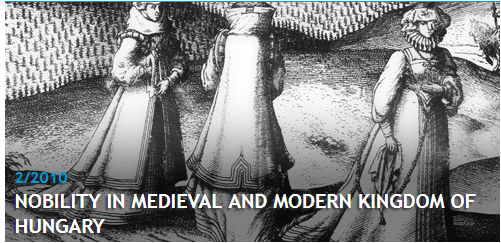Šľachta uhorskej metropoly v pomoháčskom období (Archontologicko-genealogický náčrt problematiky)
Nobility of the Metropolis of Kingdom of Hugary after the Battle of Mohács. (An Archontological and Genealogical Perspective)
Author(s): Frederik FedermayerSubject(s): Social history, 16th Century, 17th Century, 18th Century
Published by: Historický ústav SAV
Keywords: Kingdom of Hungary; 16th-17th centuries; Pressburg; county; nobility; genealogy;
Summary/Abstract: The research of nobility and lives of nobles in the Hungarian metropolis after the battle of Mohács has been rather neglected. The paper attempts to give a basic outline of the problem mainly from a genealogical and partly from an archontological perspective. The choice of Pressburg (present day Bratislava) is not accidental. Community of nobles in early modern Pressburg was quite numerous. The primary reason stemmed from the fact that after the battle of Mohács in 1526 important royal and governmental offices moved into the town. From the great part, officials and civil servants of the offices were nobles descending from old noble and aristocratic families, but increasingly also from new "armalist" families. The second noticeable group of nobility in Pressburg was represented by local burgher elite. Prominent burghers of Pressburg were almost massively nobilitated from the last third of the 16th century. This was an accompanying sign of markedly successful social emancipation of elite burgher families. While before 1550 just few nobles were members of the town council, after 1600 almost all of the councillors were nobles. The situation was much the same during the 17th and 18th centuries. It was not only members of Pressburg self-governmental offices who became nobles, but gradually also families of local successful merchants, intellectuals and prominent artisans were nobilitated. The author divides nobility of Pressburg into four groups according to their character of residence in the Hungarian metropolis. Firstly, it was the group of nobles living there permanently for a significant part of their lifetime, even for several generations. The second was the group of permanent, but short-termed residents, whose residence in the metropolis was connected to the tenure of their office. Third was the group of temporary residents, usually nobles and aristocrats, who during season would stay in their houses in Pressburg, though normally lived in their countryside mansions. Lastly, occasional residents who would visit and stay in the metropolis only during some special occasions. It is important to note that Pressburg in feudal times as ever before comprised of two independent entities – the royal part represented by the castle and the settlement around it, and free royal town of Pressburg. The division was reflected also in the structure of Pressburg nobility.
Journal: Forum Historiae. Časopis a portál pre históriu a príbuzné spoločenské vedy
- Issue Year: 4/2010
- Issue No: 2
- Page Range: 1-13
- Page Count: 13
- Language: Slovak

